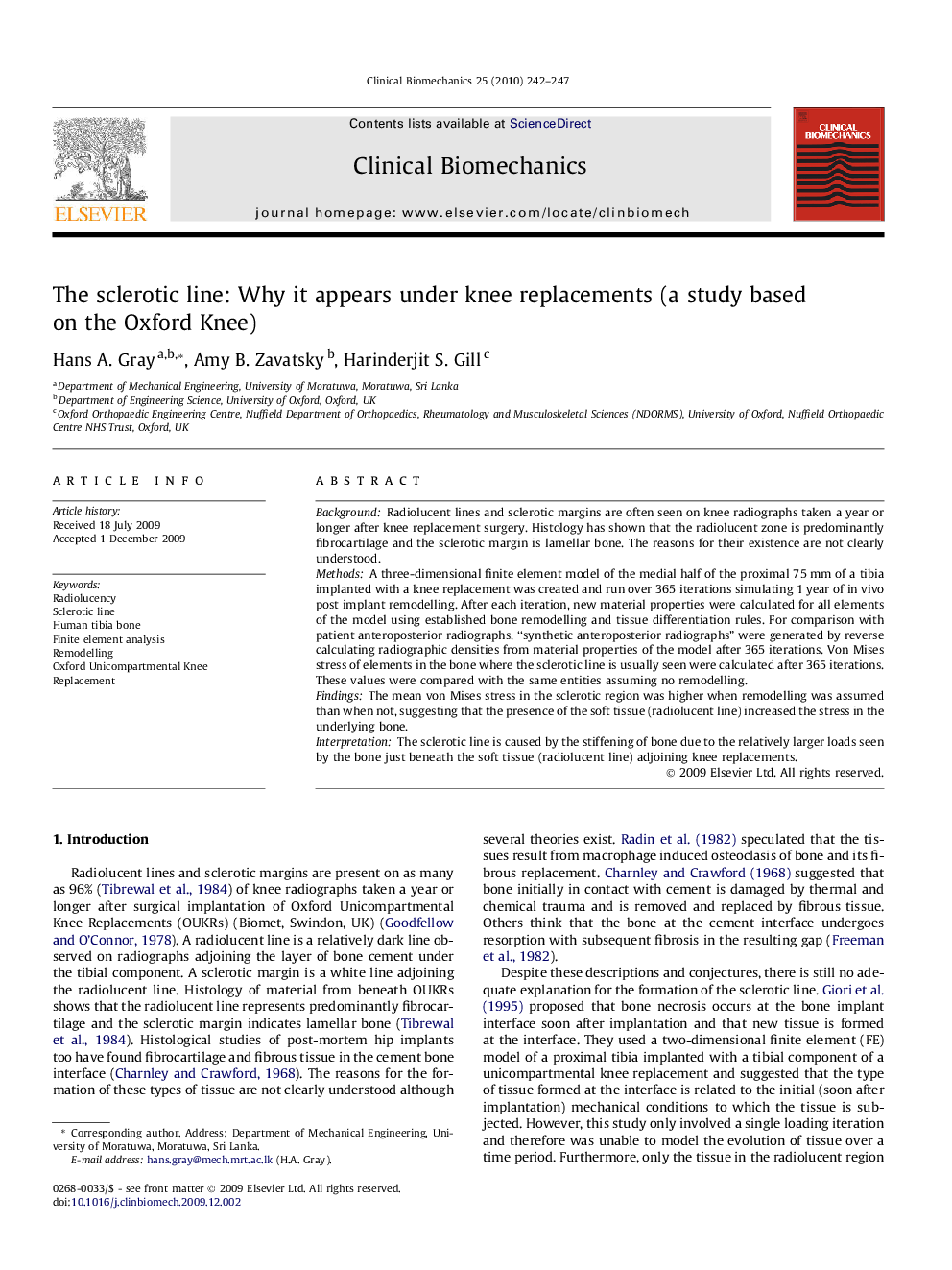| Article ID | Journal | Published Year | Pages | File Type |
|---|---|---|---|---|
| 4051116 | Clinical Biomechanics | 2010 | 6 Pages |
BackgroundRadiolucent lines and sclerotic margins are often seen on knee radiographs taken a year or longer after knee replacement surgery. Histology has shown that the radiolucent zone is predominantly fibrocartilage and the sclerotic margin is lamellar bone. The reasons for their existence are not clearly understood.MethodsA three-dimensional finite element model of the medial half of the proximal 75 mm of a tibia implanted with a knee replacement was created and run over 365 iterations simulating 1 year of in vivo post implant remodelling. After each iteration, new material properties were calculated for all elements of the model using established bone remodelling and tissue differentiation rules. For comparison with patient anteroposterior radiographs, “synthetic anteroposterior radiographs” were generated by reverse calculating radiographic densities from material properties of the model after 365 iterations. Von Mises stress of elements in the bone where the sclerotic line is usually seen were calculated after 365 iterations. These values were compared with the same entities assuming no remodelling.FindingsThe mean von Mises stress in the sclerotic region was higher when remodelling was assumed than when not, suggesting that the presence of the soft tissue (radiolucent line) increased the stress in the underlying bone.InterpretationThe sclerotic line is caused by the stiffening of bone due to the relatively larger loads seen by the bone just beneath the soft tissue (radiolucent line) adjoining knee replacements.
